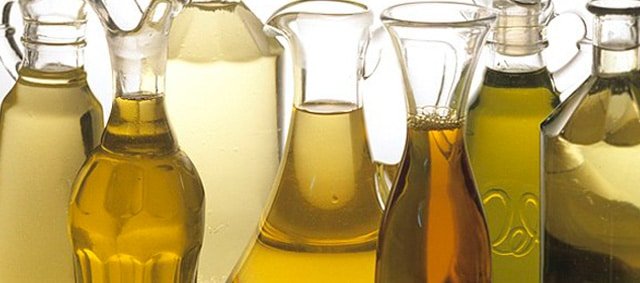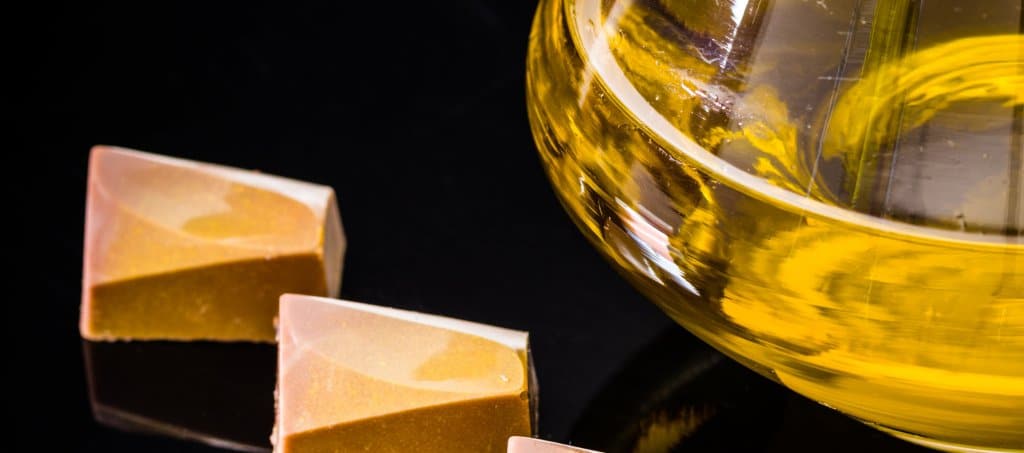Weed-infused oils are for drinkables as what cannabutter is to edibles. It is yet another proof of the versatility of cannabis concerning consumption. Like foods laced with THC and CBD, canna-beverages are also healthier alternatives to smoking. Not only are they refreshing to drink, but they also do not introduce toxic byproducts of burning dried plant matter.
Page Content
Weed-Infused Oils For DIY Drinkables
Healthier than smoking, yes. But these cannabis-infused beverages usually cost a pretty penny when bought from dispensaries. Fortunately, you can save tons by going the DIY route.
Cannabutter, or butter infused with weed, is the main ingredient for making marijuana edibles – brownies, cookies, pizza, pasta, whatever your heart desires. For drinkables, you would also need something similar – and that is where weed-infused oils come in.
Choosing Your Base Oil
Cannaoil, another fancy term for weed infused oils, is made using most kinds of – you guessed it – oil. Among the most common ones used are olive, coconut, canola, and vegetable oil. These lipids are all suitable carriers for the fat-soluble cannabinoids. Each one, however, varies in terms of fatty acid content and the robustness of flavor.

In choosing your base oil, opt for one with the highest fat content as these compounds are the ones that absorb and bind with the cannabinoids.
Olive Oil
If you prefer a carrier oil with a robust flavor, then opt for olive oil. It can effectively mask the strong taste of weed with fresh flavors of raw nuts, dry hay, along with a spicy and somewhat bitter aftertaste.
In terms of fatty acid content, olive oil contains a high percentage of monounsaturated fatty acids (MUFAs). Oleic, linoleic, palmitic, stearic, and linolenic acid, as shown in research, can reduce the risk of developing atherosclerosis and many kinds of cancers (El Riachy, Hamade, Ayoub, Dandachi, & Chalak 2019).
Coconut Oil
The idea of using a carrier oil is so that cannabinoids could bind onto it, making it possible to make drinkables. In that regard, then coconut oil is the best base you could use. With up to 90% saturated fat, it is a fantastic binding agent.
Coconut oil contains unusually high levels of medium-chain triglycerides (MCT), which makes it harder to store as body fat and quicker to burn off during metabolism. Not only that, but it also contains lauric acid, which has antimicrobial benefits (Boateng, Ansong, Owusu, & Steiner-Asiedu 2016).
For coconut oil, you have two choices. Choose virgin coconut oil to have a strong coconut flavor. Or, opt for refined coconut oil if you prefer it to be tasteless and odorless.
Canola Oil
For neutral taste and odor, you may be better off with canola oil. Not only is it rich in MUFAs, but it is also composed of up to 60% oleic acid (omega-9), 20% linoleic acid (omega-6), and 10% ALA (omega-3) (Barthet 2015). And compared to other vegetable oils, it has the lowest level of saturated fatty acids (<7%).
Canola oil also contains high levels of tocopherols, phytosterols, and polyphenols. These compounds can help reduce cholesterol blood levels, prevent diabetes and cardiovascular diseases, all while imparting antioxidant properties (Ghazani & Marangoni 2015).
Vegetable Oil
Vegetable oil is a blanket term for oils that use a mix of plant ingredients to produce oil. Like canola oil, it has a neutral flavor and odor, so using it will not affect the smell and taste of the drinkable. In terms of fatty acid, it is a mixture of saturated and unsaturated fats. Vegetable oil is the least expensive base for weed-infused oil.
How To Make Weed-infused Oil In 5 Easy Steps
Infusing cannabis into oil is so easy that anyone could do it – figuratively and literally. Prepare the materials and follow the steps, and you will soon have cannaoil you can use to make marijuana drinkables.

Materials:
- 1/2 oz (14 g) decarboxylated, coarsely ground weed
- 1-1/4 cup oil of choice
- 1 cup distilled water
- Double boiler, saucepan, or crockpot
- Cheesecloth and metal strainer
- Coffee press (optional)
- Kitchen thermometer
- Glass bowl or large measuring cup
- Airtight glass jar
Procedure:
Step 1: Combine water, oil, and decarboxylated buds in the double boiler, saucepan, or crockpot (whichever you prefer).
Notes:
- Adding water is essential to raise the heat capacity of the mixture and make sure it does not boil over. Additionally, the water absorbs the chlorophyll, effectively removing them from the buds. This means your weed-infused oil will have a less herbal taste and green color.
- It is absolutely important to use buds that have already undergone decarboxylation to ensure that the THC and/or CBD in the buds have been activated. Otherwise, the cannaoil will have weak and unsatisfactory effects when used in making edibles or drinkables.
Step 2: Turn up the heat to 220°F (105°C) and heat the mixture for a few hours. Use the kitchen thermometer to make sure the temperature does not exceed 245°F (118°C) throughout the cooking process.
The duration of this process depends on which cooker you use:
- Saucepan: 3 hours
- Crockpot or slow cooker: 4-6 hours
- Double-boiler: 6-8 hours
Note: Be sure to stir and check the temperature of the mixture every 30 minutes to prevent scorching, especially when using the saucepan method as it is the most susceptible to burning. There should also be at least a two-inch layer of water under the weed and oil mixture.
Step 3: After cooking, strain the mixture into a sterilized airtight glass jar. It can be done in two ways:
- Coffee Press Method. This technique is more efficient, and it creates less mess. All you have to do is put the mixture in the coffee press and press the plunger down slowly while exerting steady pressure. This will keep the ground buds from mixing with the final product. Then, all that’s left to do is to pour the filtered weed-infused oil in your glass jar.
- Cheesecloth And Strainer Method. If you don’t have a coffee press, the traditional way of using a strainer lined with cheesecloth will also do. Just pour the mixture and let the oil drip in your container. Do not squeeze the cheesecloth to avoid incorporating chlorophyll into the blend. This will tarnish the quality of the end product.
Step 4: Store the sealed glass jar in the fridge for up to 6 to 8 months.
Step 5: Have fun making thirst-quenching THC/CBD blends with your homemade weed-infused oil.
Citations:
El Riachy, Milad, et al. “Oil Content, Fatty Acid and Phenolic Profiles of Some Olive Varieties Growing in Lebanon.” Frontiers in Nutrition, Frontiers Media S.A., 4 July 2019.
Boateng, Laurene, et al. “Coconut Oil and Palm Oil’s Role in Nutrition, Health and National Development: A Review.” Ghana Medical Journal, Ghana Medical Association, Sept. 2016.
Barthet, V.J. “Canola: Overview.” Reference Module in Food Science, Elsevier, 30 Nov. 2015.
Ghazani, S.M., and A.G. Marangoni. “Healthy Fats and Oils.” Reference Module in Food Science, Elsevier, 30 Nov. 2015.





